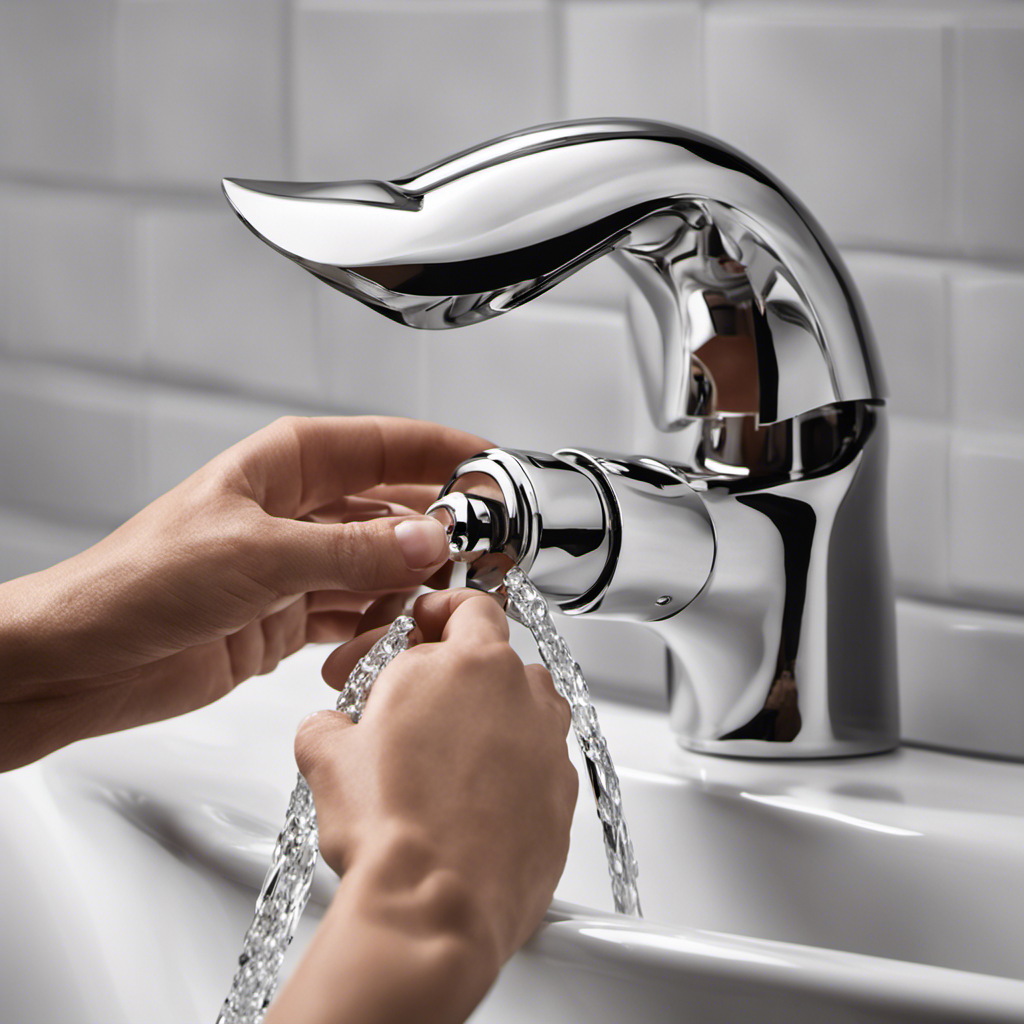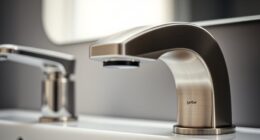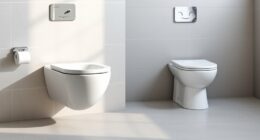Have you ever wondered if flushing the toilet could impact your water bill? Well, the answer might surprise you.
In this article, we will delve into the technical aspects of how toilets affect water consumption and explore the factors that can influence water usage during flushing.
By understanding toilet water efficiency ratings and implementing smart strategies, you can reduce your water usage and potentially save money on your monthly bill.
Get ready to master the art of efficient flushing!
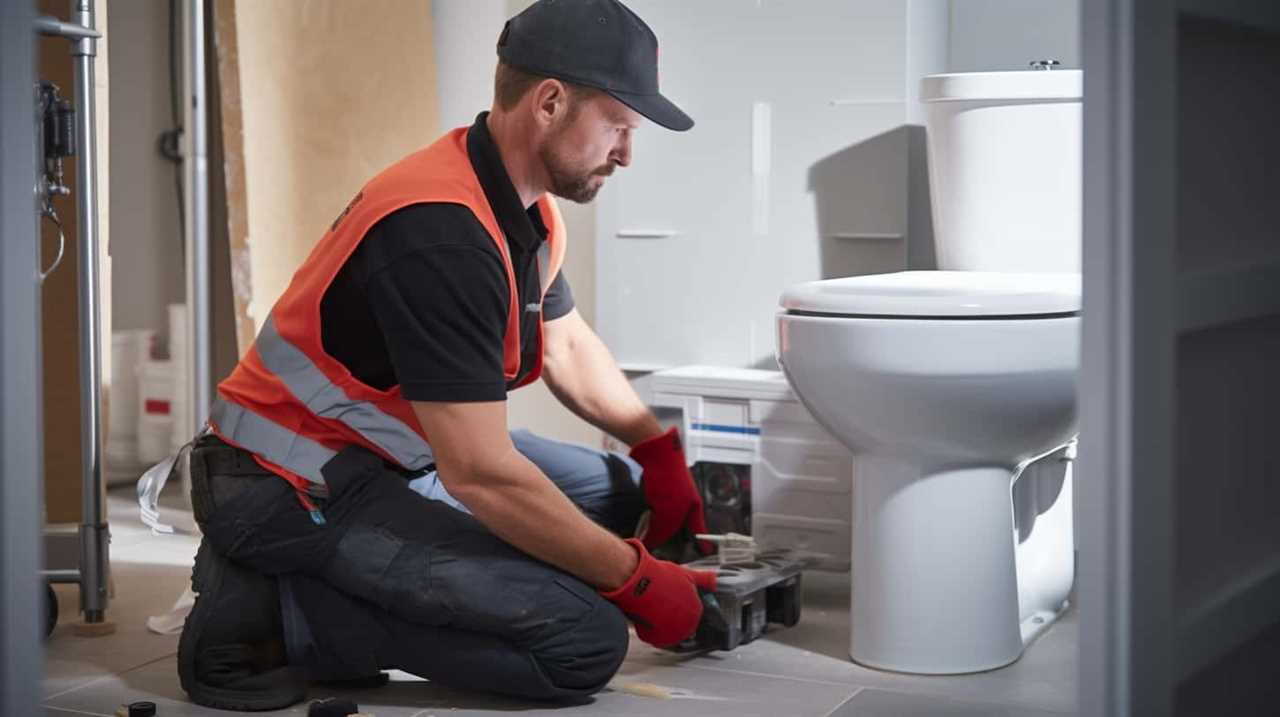
Key Takeaways
- Traditional toilets use a large amount of water per flush, contributing to higher water bills.
- Upgrading to water-saving toilets with higher efficiency ratings can significantly reduce water consumption and potentially save money on monthly bills.
- Implementing water-saving strategies such as adjusting water levels, using dual-flush toilets, and repairing leaks can further minimize water usage and lower water bills.
- Mindful flushing habits, such as the ‘If it’s yellow, let it mellow’ approach, can conserve water and reduce expenses.
How Toilets Impact Water Consumption
Toilets significantly affect our water consumption. One of the main contributors to water wastage is the inefficient use of water during flushing. Traditional toilets use a large amount of water for each flush, leading to unnecessary wastage.
However, with the advancement of technology, water-saving toilet technology has been developed to address this issue. These toilets are designed to use less water while still maintaining an effective flush. They achieve this by using innovative flushing mechanisms, such as dual flush systems, pressure-assist technology, or gravity-assist technology.
Factors Affecting Water Usage During Flushing
One of the main factors that can affect water usage during flushing is the type of flushing mechanism used. Different toilet flushing technologies have varying levels of water efficiency, which directly impact the amount of water consumed per flush. Here are five key factors that contribute to water usage during flushing:
- Flush volume: The amount of water released during a flush can vary depending on the toilet model. Older toilets typically use a higher flush volume compared to newer, more water-efficient models.
- Dual flush technology: Some toilets are equipped with dual flush systems, allowing users to choose between a full flush for solid waste and a reduced flush for liquid waste. This feature promotes water conservation by utilizing less water when appropriate.
- Pressure-assisted flushing: This technology uses pressurized air or water to forcefully remove waste from the bowl, reducing the need for multiple flushes and minimizing water usage.
- Gravity-flush toilets: These toilets rely on the force of gravity to remove waste, utilizing less water compared to pressure-assisted systems. However, the efficiency of gravity-flush toilets can vary based on design and water consumption.
- Water-saving features: Modern toilets often include water-saving features such as adjustable flush volumes, fill valves, and flappers. These components optimize water usage during flushing while still effectively removing waste.
Understanding the various factors affecting water usage during flushing is crucial for implementing water conservation methods and reducing water bills. By choosing toilets with efficient flushing mechanisms and utilizing water-saving features, individuals can contribute to sustainable water usage and conservation efforts.
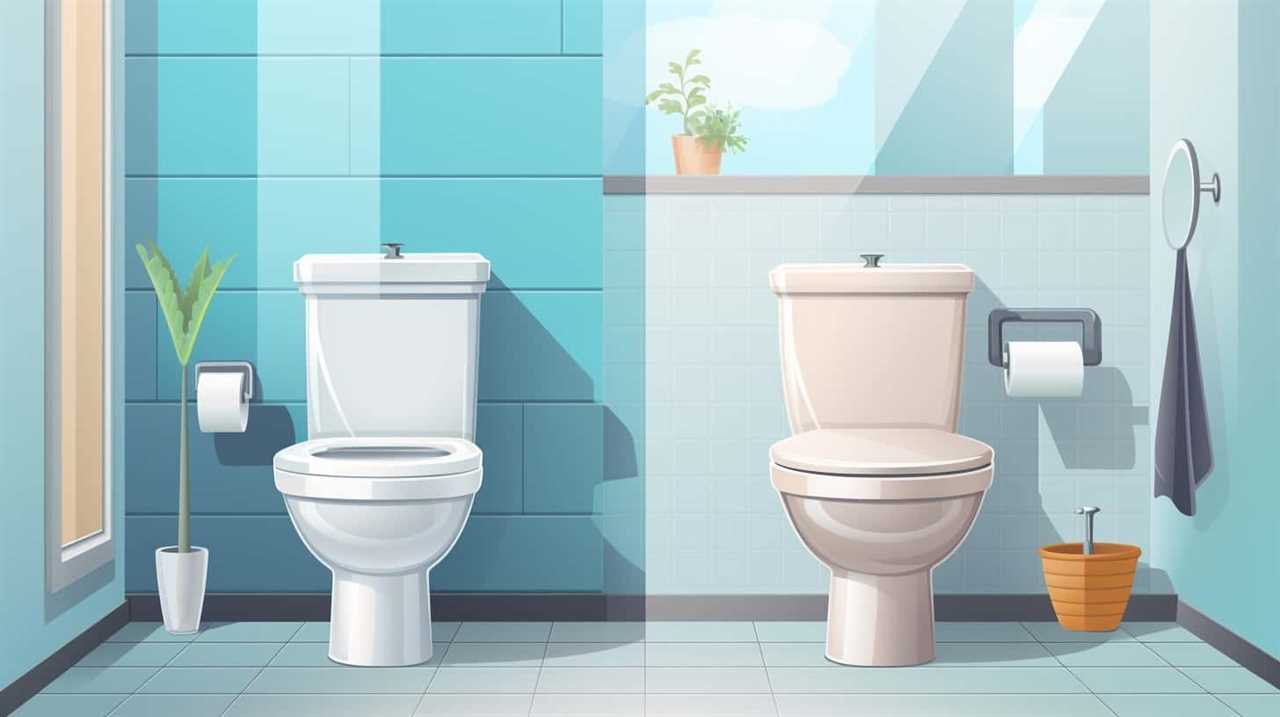
Now, let’s delve into the next section and explore the concept of understanding toilet water efficiency ratings.
Understanding Toilet Water Efficiency Ratings
Now let’s delve into how we can evaluate the efficiency of toilets by understanding toilet water efficiency ratings.
When it comes to toilet water conservation, it’s important to consider the amount of water used during each flush. This is where toilet water efficiency ratings come into play. These ratings measure the amount of water a toilet uses per flush, typically expressed in gallons per flush (GPF).
Traditional toilets typically use around 3.5 to 7 gallons of water per flush, while newer, water-saving toilet options can use as little as 1.28 GPF or even less. By choosing a toilet with a higher water efficiency rating, you can significantly reduce water consumption and save money on your water bill.
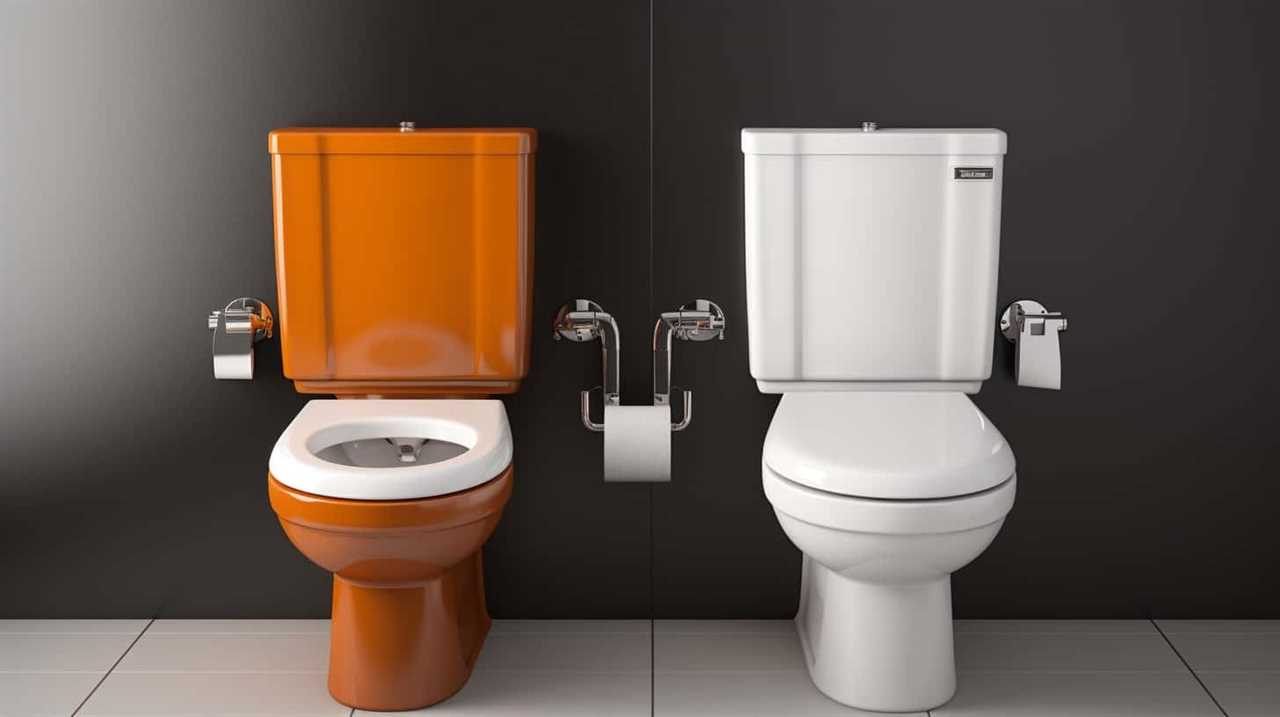
Now, let’s move on to the next section where we’ll discuss tips for reducing water usage when flushing.
Tips for Reducing Water Usage When Flushing
Implementing water-saving strategies is essential for minimizing water usage when flushing and reducing your water bill. Here are five efficient flushing techniques and water-saving toilet options to help you achieve this goal:
- Adjust the water level: Check the water level in the toilet tank and adjust it to the manufacturer’s recommended level. This will ensure that you’re using the right amount of water for each flush.
- Install a dual-flush toilet: These toilets offer two flushing options – a full flush for solid waste and a reduced flush for liquid waste. By using the appropriate flush option, you can significantly reduce water consumption.
- Consider a low-flow toilet: Low-flow toilets use less water per flush compared to traditional toilets. Look for models with a WaterSense label, which indicates that they meet water efficiency standards.
- Use a toilet displacement device: Placing a device, such as a plastic bottle filled with water or a bag of sand, in the toilet tank can reduce the amount of water used per flush.
- Repair leaks promptly: Leaky toilets can waste a significant amount of water. If you notice any leaks, fix them immediately to prevent unnecessary water usage.
By implementing these water-saving strategies, you can reduce your water usage when flushing and ultimately lower your water bill.
Now, let’s explore the potential impact on your water bill in the next section.
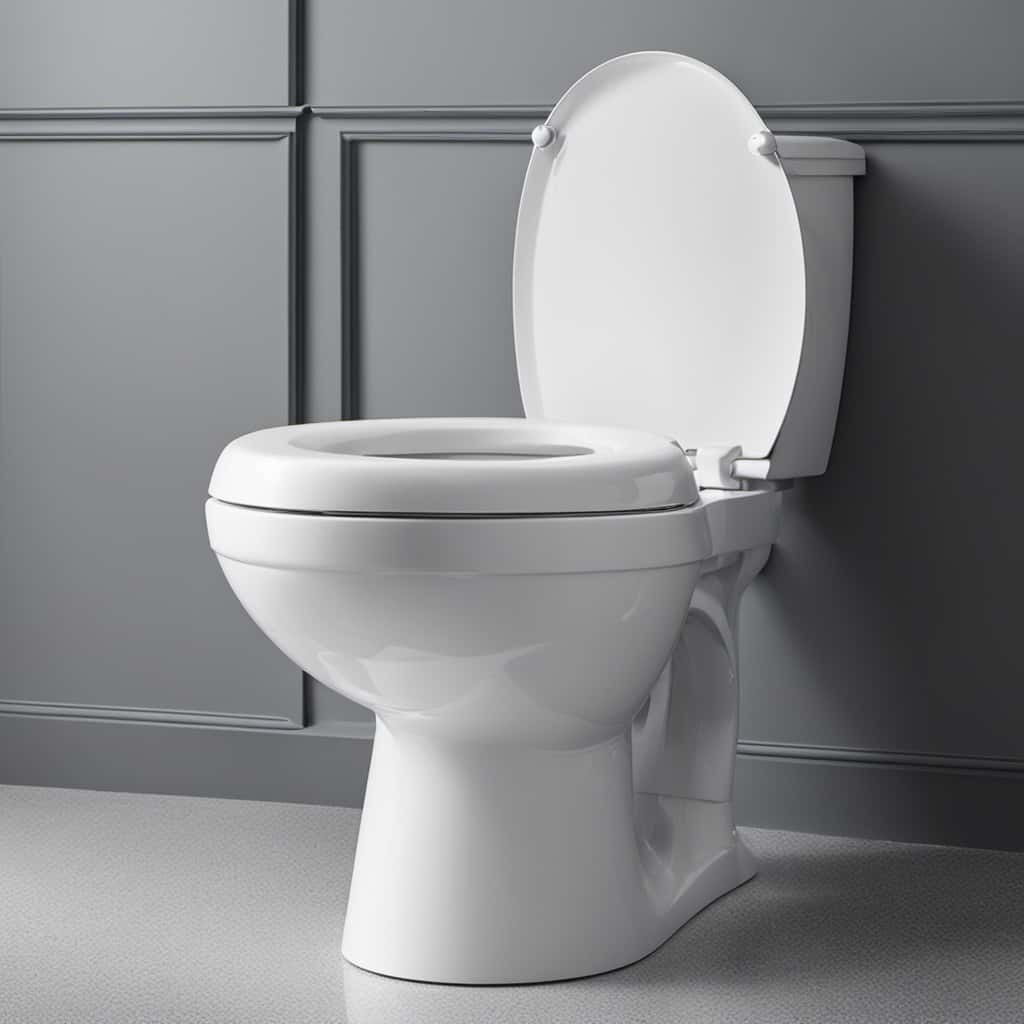
The Potential Impact on Your Water Bill
As we continue our exploration of water-saving strategies for reducing water usage when flushing, it’s important to consider the potential impact on our water bill. By implementing effective water conservation strategies, we can’t only reduce our environmental impact but also save money in the process.
One of the key factors influencing our water bill is the volume of water consumed through flushing. Traditional toilets can use up to 7 gallons per flush, while newer models can use as little as 1.6 gallons. By upgrading to a more water-efficient toilet, we can significantly reduce our water usage and subsequently lower our monthly bill.
Additionally, being mindful of our flushing habits can also make a difference. Avoiding unnecessary flushes and opting for ‘if it’s yellow, let it mellow’ approach when appropriate can further contribute to water conservation and minimize costs.
Frequently Asked Questions
Are There Any Alternative Methods to Reduce Water Usage When Flushing Besides Replacing the Toilet?
There are alternative methods for water conservation when flushing besides replacing the toilet. These methods can help reduce water usage, resulting in lower water bills.
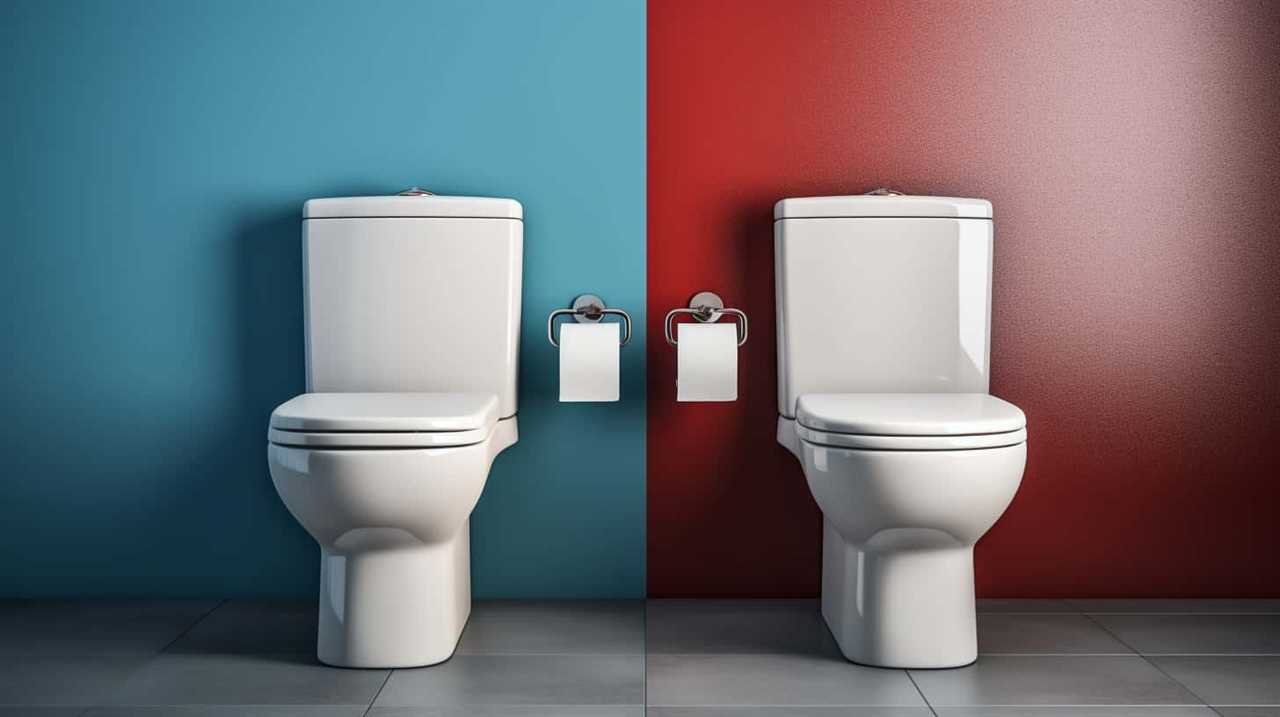
Can Using a Dual-Flush Toilet Help in Reducing Water Consumption?
Using a dual-flush toilet can significantly reduce water consumption. It provides the option to flush with less water for liquid waste and more water for solid waste. This simple switch can lead to significant water savings and lower water bills.
Are There Any Government Regulations or Incentives to Promote Water-Efficient Toilets?
There are government regulations and incentives in place to promote the use of water-efficient toilets. These measures aim to encourage individuals and businesses to adopt more sustainable practices and reduce water consumption.
How Does the Flushing Mechanism of a Toilet Affect Its Water Usage?
The flushing mechanism of a toilet significantly impacts its water usage. Toilet efficiency has improved over time with water-saving innovations, resulting in reduced water consumption per flush and potential savings on water bills.
Can Using a Toilet Bowl Cleaner or Bleach Affect the Water Efficiency of a Toilet?
Using a toilet bowl cleaner or bleach can potentially impact the water efficiency of a toilet. It’s essential to consider the safety of these products and their potential effects on the overall functioning of the toilet.

Conclusion
In conclusion, understanding how toilets impact water consumption is crucial for managing your water bill. Factors such as the type of toilet and its water efficiency rating play a significant role in determining the amount of water used during flushing.
By adopting tips for reducing water usage and choosing more efficient toilets, you can minimize the potential impact on your water bill while still maintaining proper hygiene.
So, next time you flush, consider both the environmental and financial implications.

